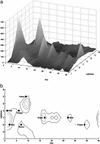Resolving the question of color naming universals
- PMID: 12855768
- PMCID: PMC166442
- DOI: 10.1073/pnas.1532837100
Resolving the question of color naming universals
Abstract
The existence of cross-linguistic universals in color naming is currently contested. Early empirical studies, based principally on languages of industrialized societies, suggested that all languages may draw on a universally shared repertoire of color categories. Recent work, in contrast, based on languages from nonindustrialized societies, has suggested that color categories may not be universal. No comprehensive objective tests have yet been conducted to resolve this issue. We conduct such tests on color naming data from languages of both industrialized and nonindustrialized societies and show that strong universal tendencies in color naming exist across both sorts of language.
Figures




References
-
- Berlin, B. & Kay, P. (1969) Basic Color Terms: Their Universality and Evolution (Univ. of California Press, Berkeley).
-
- Kaiser, P. K. & Boynton, R. M. (1996) Human Color Vision (Optical Soc. Am., Washington, DC), pp. 498-505.
-
- Hardin, C. L. (1993) Color for Philosophers: Unweaving the Rainbow (Hackett, Indianapolis), pp. 155-164.
-
- Shepard, R. N. (1997) in Readings on Color, eds. Byrne, A. & Hilbert, D. R. (MIT Press, Cambridge, MA), Vol. 2, pp. 311-356.
-
- Boynton, R. M. (1997) in Color Categories in Thought and Language, eds. Hardin, C. L. & Maffi, L. (Cambridge Univ. Press, Cambridge, U.K.), pp. 135-150.
LinkOut - more resources
Full Text Sources

